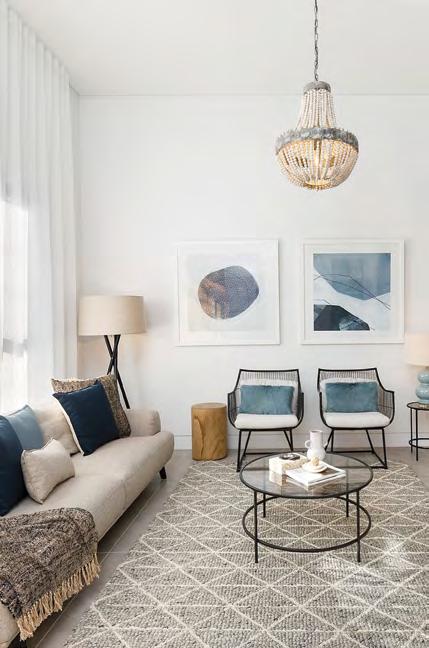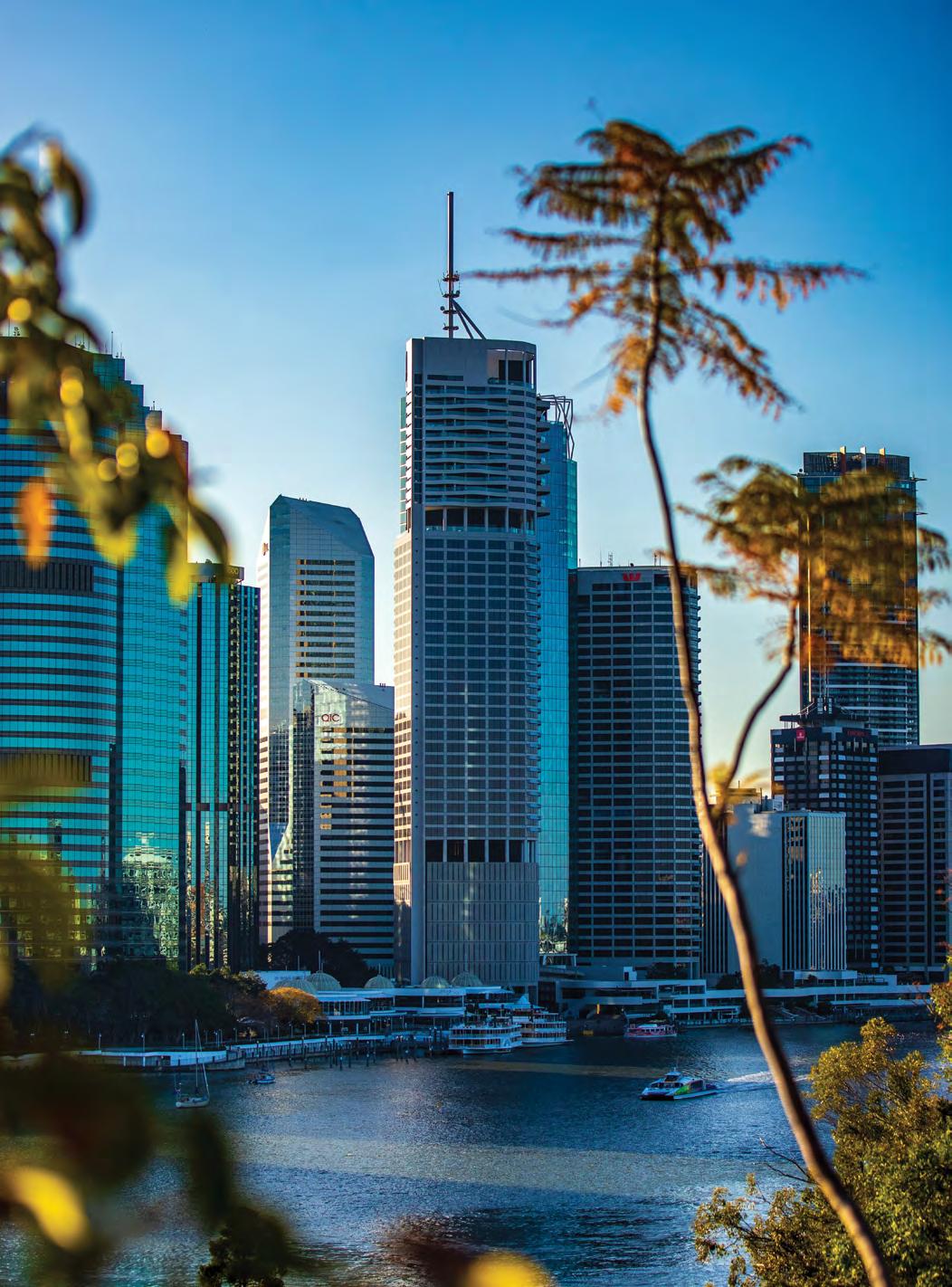
7 minute read
MELBOURNE & SURROUNDS
MEDIAN HOUSE PRICE $780,836
MEDIAN APARTMENT PRICE $558,952
CORELOGIC, SEPTEMBER 2020
The property market in Australia’s fastest growing city1 has been more deeply affected by COVID-19, particularly during Stage 4 restrictions when in-person inspections of homes for sale were banned and all real estate offices had to close from early August for an extended period.
However, as Australia’s most liveable city2 and No. 1 growth economy in FY193, Melbourne is well-equipped to manage the coronavirus storm and based on historical trends, it is likely to bounce back strongly. CoreLogic described a ‘substantial over-performance from Melbourne during the post-GFC stimulusfuelled growth phase’4 .
The pandemic interrupted an exceptional run in Melbourne, with home values recovering rapidly from their floor in May 2019 to just shy of their record 2017 high by Christmas 20195. Despite COVID-19’s dampening effect, the city still recorded impressive results for FY20, with median prices up 10.6% for houses to $802,551 and 9.3% for apartments to $575,0096 .
The gentrifying beachside suburb of St Kilda was Australia’s best performer for capital growth in houses in 2019, with the median price up 19.6% to $1,584,805 on the back of surging demand for premium homes7 .
This was reflected in one of Australia’s most popular reality TV shows, ‘The Block’, which was set in St Kilda for two consecutive seasons.
In 2018, five couples renovated the former Gatwick Hotel into boutique luxury apartments that sold at auction for between $2.77 million and $3.02 million8 .
In 2019, former backpacker hotel, The Oslo was transformed into five three-storey luxury homes that sold under the hammer for between $3.374 million and $3.62 million9 .
MEDIAN HOUSE PRICES FY20
Amongst Australia’s top five performing areas for long term consistent capital growth10 were the low profile, family friendly suburbs of Bonbeach, Carnegie and Templestowe Lower, which have all recorded median house price increases of about 30-40% since 2015.
Bonbeach is a fast-growing lifestyle area benefitting from the Peninsula Link and Mornington Peninsula Freeway, which gets commuters into the city in 40-60 minutes11 .
In 2018, the new elevated rail line that replaced nine level crossings between Caulfield and Dandenong meant a new train station for Carnegie with 20-minute express city services.
Templestowe Lower has attracted families priced out of nearby Doncaster. They can still easily access Doncaster Shopping Town, quality schools and Yarra Valley Parklands and drive into the CBD within 20-25 minutes but the typical house is $90,000 cheaper15 .
$555,000 GEELONG $415,000 BALLARAT $802,551 MELBOURNE
For city dwellers, Melbourne’s streetscape has undergone significant change in the past decade with 12,630 new dwellings added to the CBD – the equivalent of Adelaide CBD’s entire housing stock12. The popularity of inner city apartments has been fuelled by surging city-based employment opportunities and population growth, whilst residents have valued the convenience, comparative affordability to houses and reduced travel time to work.
Melbourne initially experienced a small but more rapid decline in home values due to the virus, with a -3.2% dip over the three months to July 31, 2020 compared to -2.1% in Sydney and -0.9% in Brisbane14. CoreLogic research shows it is normal for Melbourne to experience bigger price gains and falls than Sydney4, so this was an unsurprising trend.
However, Victoria also had the largest job losses13 and was more affected by the international border closure and the fall in overseas migration. In FY19, almost four in 10 migrants or 77,369 people chose to settle in Melbourne4, so the temporary pause on immigration had an immediate impact, particularly on rental values.
Further losses in home values of -1.2% in August and -0.9% in September reflected the impact of the second wave and lockdown14 .
Regional Victoria has shown more resilience with just an -0.8% fall in home values in the three months to July 31, 2020. There was a further fall of -0.5% in August and prices were stable in September14. Amongst the strongest regional markets are Geelong and Ballarat, where median house prices have risen about 25%15 since 2017 to $555,000 and $415,000 respectively, remaining well below Melbourne at $802,5516 as at June 30, 2020.
In recent years, jobs growth, business investment, new infrastructure and housing affordability have made these two satellite cities highly attractive to Melbourne families willing to commute back to the CBD each day for work.
Now, the ability to work remotely from further afield has put many more affordable lifestyle destinations in the spotlight. The Victorian high country is proving to be an early beneficiary of this trend, with growing buyer interest in areas such as Mansfield Shire in the state’s north east.
About 2.5 hours from Melbourne and one hour from the regional centres of Shepparton, Wangaratta and Benalla, Mansfield Shire is attracting more treechangers due to its many recreational options including snow skiing, water skiing on Lake Eildon, horse riding and fishing.
In response to COVID-19, the Victorian Government has launched a $2.7 billion jobcreating infrastructure blitz16 that includes 10 new schools in areas such as Greenvale, Melton South, Deanside and Clyde17 and upgrades to 57 others, as well as the re-building of Clifton Creek Primary School in East Gippsland, which was destroyed in the 2020 bushfires.
As Australia’s worst affected city, coronavirus has ravaged Melbourne but when it is over, this southern star will easily resume its place as one of the world’s most desirable and aspirational lifestyle centres, with a bright future and great liveability once again.
JOHN McGRATH’S TOP PICKS
THORNBURY
Earmarked as an up-and-coming suburb for many years, Thornbury is a cultural melting pot popular with hipsters, professionals, young families and older migrants who moved in decades ago. On average it’s $200,000-$350,000 cheaper than neighbouring Northcote and Fitzroy North1 but still offers the same great city access via the No. 11 tram that runs every 10 minutes for a 25-minute journey to Spring/Collins Street. It has its own parochial buzz with pubs, boutique shops and cafes on High Street and its local schools, including Thornbury High and Northcote High, have a great reputation. Scan here for more insights. SUNSHINE
All eyes are on Sunshine as the Victorian Government completes a business case study on its suitability as the preferred route for Melbourne’s $13 billion 27km Airport Rail to the CBD. If it proceeds, Sunshine will become a super transport hub the size of Southern Cross Station, offering accommodation, food, retail and commercial spaces. The Sunshine Super Hub will also become a gateway to regional Victoria under the broader Western Rail Plan, which includes the fast rail to Geelong and Ballarat. Identified as a State Government priority precinct, Sunshine will receive a significant boost to infrastructure, health services and education facilities over the next seven years, which will generate thousands of jobs and service the region’s growing population2. Brimbank Council is aiming to make Sunshine the capital of Melbourne’s
west by 2050.
HAWTHORN
The median house price broke the $2 million mark3 in the June 2020 quarter but apartments are affordable at a median $677,000, despite 15.2% growth over the same period. Only 6km from Melbourne’s CBD and 13 minutes by train from Glenferrie Station to Flinders Street Station, Hawthorn is surrounded by some of the city’s most expensive and prestigious suburbs including Toorak, Camberwell, Kew and Hawthorn East. Apartment owners benefit from the same lifestyle perks and amenities of these illustrious neighbours but without the price tag.
COBURG NORTH
Coburg North is benefitting from the ripple effect of rising house prices in neighbouring Coburg and Brunswick. Transformation is underway in this hidden hub, 11km north of the city and 20 minutes’ drive to Melbourne Airport. It is popular amongst 30-somethings with a large Italian and Greek community4 creating a wonderful cultural combination. The median house price is $170,000 cheaper than Coburg1. The No. 19 tram to Flinders Street Station takes 30 minutes and the 15km bike ride along the scenic Merri Creek river trail is a popular option for the heart and hip pocket.
KILMORE – REGIONAL VICTORIA
Young families seeking a country lifestyle within commuting distance of Melbourne are being drawn to Kilmore. The median house price is $443,750, about 45% cheaper than Melbourne1 and the trip from Kilmore East Station to Southern Cross Station takes just an hour. Services and amenities include a golf course, hospital, councilowned gym and pool, cafes and shops. A Kilmore Structure Plan to cater for the region’s growth includes street widening, new footpaths and a bypass off the Northern Highway for improved accessibility and safety5 .
PHOTOGRAPHY: SUPPLIED BY McGRATH ESTATE AGENTS










